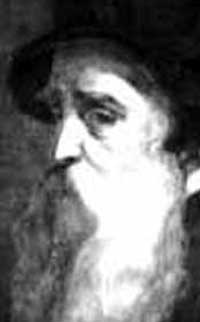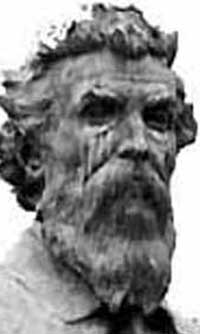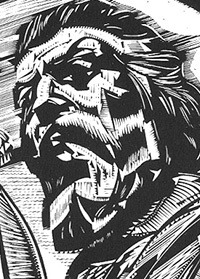Copyright Michael D. Robbins 2005
Astro-Rayological Interpretation & Charts
Quotes
Biography
Images & Physiognomic Interpretation
One can pass on responsibility, but not the discretion that goes with it.
All works of nature created by God in heaven and on earth are works of sculpture.
I say that the art of sculpture is eight times as great as any other art based on drawing, because a statue has eight views and they must all be equally good.
The plague had by this time almost died out, so that the survivors, when they met together alive, rejoiced with much delight in one another's company. This led to the formation of a club of painters, sculptors and goldsmiths, the best that were in Rome. Oh the powers of nature. She knows what we need, and the doctors know nothing.
Gold Salt cellar by CelliniBenvenuto Cellini (November 3, 1500 – February 13, 1571) was an Italian goldsmith, painter, sculptor, soldier and musician of the Renaissance.
Benvenuto Cellini was born in Florence, Italy, where his family had been landowners in the Val d'Ambra for three generations. His father, Giovanni Cellini, built and played musical instruments; he married Maria Lisabetta Granacci, and eighteen years elapsed before they had children. Benvenuto was the second child.
The father wished Benvenuto to join him in instrument making, and endeavoured to thwart his inclination for metalwork. When he was fifteen, his father reluctantly agreed to apprentice him to a goldsmith, Antonio di Sandro, nicknamed Marcone. Benvenuto had already attracted attention in his native town, after a fray with youthful companions, he was banished for six months to Siena, where he worked for Francesco Castoro (Fracastoro), a goldsmith; from there he moved to Bologna, where he became a more accomplished flute-player and made progress in the goldsmith's art. After visiting Pisa, and after twice resettling in Florence (where he was visited by the sculptor Torrigiano, he decamped to Rome, age nineteen.
His first attempt at his craft here was a silver casket, followed by some silver candlesticks, and later by a vase for the bishop of Salamanca, which introduced him to the favourable notice of Pope Clement VII; likewise at a later date one of his celebrated works, the gold medallion of "Leda and the Swan" — the head and torso of Leda cut in hard stone — executed for the Gonfaloniere Gabbriello Cesarino, which is now in the Vienna museum; he also reverted to music, practised flute-playing, and was appointed one of the pope's court-musicians. In the attack upon Rome by the Constable de Bourbon, which occurred immediately after, the bravery and address of Cellini proved of signal service to the pontiff; if we may believe his own accounts, his was the very hand which shot the Bourbon dead, and he afterwards killed Philibert, Prince of Orange.
Bust of Benvenuto Cellini on the Ponte Vecchio, FlorenceHis exploits paved the way for a reconciliation with the Florentine magistrates, and he returned shortly to his native place. Here he assiduously devoted himself to the execution of medals, the most famous of which (executed a short while later) are "Hercules and the Nemean Lion", in gold repoussé work, and "Atlas supporting the Sphere", in chased gold, the latter eventually falling into the possession of Francis I.
From Florence he went to the court of the duke of Mantua, and then again to Florence and to Rome, where he was employed not only in the working of jewelry, but also in the execution of dies for private medals and for the papal mint. Here in 1529 he killed his brother's murderer; and soon had to flee to Naples to shelter himself from the consequences of an affray with a notary, Ser Benedetto, whom he wounded. Through the influence of several of the cardinals he obtained a pardon; and on the elevation of Pope Paul III to the pontifical throne he was reinstated in his former position of favour, notwithstanding a fresh homicide of a goldsmith which he had committed more by accident than of malice prepense in the interregnum.
Once more the plots of Pierluigi Farnese, a natural son of Paul III, led to his retreat from Rome to Florence and Venice, and once more he was restored with greater honour than before. On returning from a visit to the court of Francis I, being now aged thirty-seven, he was imprisoned on a charge (apparently false) of having embezzled during the war the gems of the pontifical tiara; he remained some while confined in the Castel Sant'Angelo, escaped, was recaptured, and treated with great severity, and was in daily expectation of death on the scaffold.
At last, however, he was released at the intercession of Pierluigi's wife, and more especially of the Cardinal d'Este of Ferrara, to whom he presented a splendid cup. For a while, he worked at the court of Francis I, at Fontainebleau and Paris; but he considered the duchesse d'Étampes to be set against him, and the intrigues of the king's favourites, whom he would not stoop to conciliate and could not venture to silence by the sword, as he had silenced his enemies in Rome, led him, after about five years of laborious and sumptuous work, and of continually-recurring jealousies and violences, to retire in 1545 in disgust to Florence, where he employed his time in works of art, and exasperated his temper in rivalries with the uneasy-natured sculptor Baccio Bandinelli.
The first collision between the two had occurred several years before when Pope Clement VII commissioned Cellini to mint his coinage. Now, in an altercation before Duke Cosimo, Bandinelli insultingly stigmatized Benvenuto as guilty of gross immorality, calling out to him Sta cheto, soddomitaccio! (Shut up, you filthy sodomite!); in his autobiography Cellini recalls repelling rather than denying the charge, claiming to be unworthy of such a divine and royal diversion. Certainly his art, often celebratory of the young male form, is a testimonial to his appreciation of that beauty. Some of Cellini's homoerotic classical references
His biography omits the four charges against him of sodomy:
At the age of 23 with a boy named Domenico di ser Giuliano da Ripa, an accusation was settled with a small fine (perhaps thanks to his youth at the time).
An accusation in Paris, involving a female lover, which he braved out in court.
In Florence in 1548, Cellini was accused by a women named Margherita, for having certain familiarities with her son, Vincenzo. Perhaps this was a private quarrel, one from which he simply fled, and undeserving of attention.
Finally, in 1556, his apprentice Fernando, after being fired for an altercation, accused his mentor of: (as the indictment read) Cinque anni ha tenuto per suo ragazzo Fernando di Giovanni di Montepulciano, giovanetto con el quale ha usato carnalmente moltissime volte col nefando vitio della soddomia, tenendolo in letto come sua moglie (For five years he kept as his boy Fernando di Giovanni di Montepulciano, a youth whom he used carnally in the abject vice of sodomy numerous instances, keeping him in his bed as a wife.) This time the penalty was a hefty fifty golden scudi fine, and four years of prison, remitted to four years of house arrest thanks to the intercession of the Medicis.
He is also known to have taken some of his female models as mistresses, having an illegitimate daughter with one of them while living in France. After briefly attempting a clerical career, in 1562, he married a servant, with whom he had five children, of which only a son and two daughters survived him.It is notable that his references to his boy models (and possibly lovers) are more tender and affectionate than his references to women, including his wife. In his sculpture, the male is always more convincingly modelled than the female - his Venus of Fontainebleau, while notable, is unconvincing as a representation of the realistic female body.
During the war with Siena, Cellini was appointed to strengthen the defences of his native city, and, though rather shabbily treated by his ducal patrons, he continued to gain the admiration of his fellow-citizens by the magnificent works which he produced. He died in Florence in 1571 and was buried with great pomp in the church of the Annunziata. He had supported in Florence a widowed sister and her six daughters.
Perseus with the Head of Medusa in the Loggia dei Lanzi gallery on the edge of the Piazza della Signoria in Florence; picture taken after the statue's cleaning and restorationBesides the works in gold and silver which have been adverted to, Cellini executed several pieces of sculpture on a grander scale. The most distinguished of these is the bronze group of "Perseus holding the head of Medusa", a work (first suggested by Duke Cosimo I de Medici) now in the Loggia dei Lanzi at Florence, full of the fire of genius and the grandeur of a terrible beauty, one of the most typical and unforgettable monuments of the Italian Renaissance. The casting of this great work gave Cellini the utmost trouble and anxiety; and its completion was hailed with rapturous homage from all parts of Italy. The original relief from the foot of the pedestal — Perseus and Andromeda — is in the Bargello, and replaced by a cast.
By 1996 centuries of exposure to the elements had left the statue streaked and banded with dirt and pollution. In December of that year it was removed from the Loggia to the Uffizi for cleaning and restoration. This was a slow and painstaking process, and it was not until June 2000 that the restored statue was returned to its original home.
Among his works of art not already mentioned, many of which have perished, were a colossal Mars for a fountain at Fontainebleau and the bronzes of the doorway, coins for the Papal and Florentine states, a Jupiter in silver of life size, and a bronze bust of Bindo Altoviti. The works of decorative art are, speaking broadly, rather florid than chastened in style.
In addition to the bronze statue of Perseus and the medallions already referred to, the works of art in existence today executed by him are a medallion of Clement VII in commemoration of the peace between the Christian princes, 1530, with a bust of the pope on the reverse and a figure of Peace setting fire to a heap of arms in front of the temple of Janus, signed with the artist's name; a medal of Francis I with his portrait, also signed;a medal of Cardinal Pietro Bembo; and the celebrated gold, enamel and ivory salt-cellar (known as Saliera) made for Francis I at Vienna. This object, of a value conservatively estimated at US$ 58,000,000, was stolen from the Kunsthistorisches Museum on May 11, 2003. This intricate 16-centimeter-high sculpture was commissioned by Francis I. Crafted with amazingly rich detail and skill, its principal figures are a naked sea god and a woman who sit opposite each other, with legs entwined - a symbolic representation of the planet earth. The thief climbed scaffolding and smashed windows to enter the museum. The thief set off the alarms, but these were ignored as false, and the theft remained undiscovered until 8:20 AM. On January 21, 2006 the Saliera was recovered by the Austrian police and is supposed to be returned to the Kunsthistorisches Museum the coming days.
One of the most important works by Cellini from late in his career was a life-size nude crucifix carved from marble. Although originally intended to be placed over his tomb, this crucifix was sold to the Medici family who gave it to Spain. Today the crucifix is in the Escorial Monastery near Madrid, where it has usually been displayed in an altered form--the monastery added a loincloth and a crown of thorns. For detailed information about this work, see the text by Juan López Gajate in the Further Reading section of this article.
Cellini, while employed at the papal mint at Rome during the papacy of Clement VII and later of Paul III, executed the dies of several coins and medals, some of which still survive at this now defunct mint. He was also in the service of Alessandro de Medici, first duke of Florence, for whom he executed in 1535 a forty-soldi piece with a bust of the duke on one side and standing figures of the saints Cosma and Damian on the other. Some connoisseurs attribute to his hand several plaques, "Jupiter crushing the Giants", "Fight between Perseus and Phinaeus", a Dog, etc.
The important works which have perished include the uncompleted chalice intended for Clement VII; a gold cover for a prayer-book as a gift from Pope Paul III to Charles V, Holy Roman Emperor — both described at length in his autobiography; large silver statues of Jupiter, Vulcan and Mars, wrought for Francis I during his sojourn in Paris; a bust of Julius Caesar; and a silver cup for the cardinal of Ferrara. The magnificent gold "button", or morse, made by Cellini for the cape of Clement VII, the competition for which is so graphically described in his autobiography, appears to have been sacrificed by Pope Pius VI, with many other priceless specimens of the goldsmith's art, in furnishing the indemnity of 30,000,000 francs demanded by Napoleon at the conclusion of the campaign against the States of the Church in 1797. According to the terms of the treaty, the pope was permitted to pay a third of that sum in plate and jewels. Fortunately there are in the print room of the British Museum three watercolour drawings of this splendid morse by F. Bertoli, done at the instance of an Englishman named Talman in the first half of the 18th century. The obverse and reverse, as well as the rim, are drawn full size, and moreover the morse with the precious stones set therein, including a diamond then considered the second largest in the world, is fully described.
Cellini in Literature
Not less characteristic of its splendidly gifted and barbarically untameable author are the autobiographical memoirs which he composed, beginning them in Florence in 1558 — a production of the utmost energy, directness and racy animation, setting forth one of the most singular careers in all the annals of fine art. His amours and hatreds, his passions and delights, his love of the sumptuous and the exquisite in art, his self-applause and self-assertion, running now and again into extravagances which it is impossible to credit, and difficult to set down as strictly conscious falsehoods, make this one of the most singular and fascinating books in existence. Here we read, not only of the strange and varied adventures of which we have presented a hasty sketch, but of the devout complacency with which Cellini could contemplate a satisfactorily achieved homicide; of the legion of devils which he and a conjuror evoked in the Colosseum, after one of his not innumerous mistresses had been spirited away from him by her mother; of the marvellous halo of light which he found surrounding his head at dawn and twilight after his Roman imprisonment, and his supernatural visions and angelic protection during that adversity; and of his being poisoned on two separate occasions. If he is unmeasured in abusing some people, he is also unlimited in praising others. The autobiography has been translated into English by Thomas Roscoe, by John Addington Symonds, and by A. Macdonald. It has been considered and published as a classic, and commonly regarded as one of the most colourful autobiographies (certainly the most important autobiography from the Renaissance). Cellini also wrote treatises on the goldsmith's art, on sculpture, and on design (translated by C. R. Ashbee, 1899).The life of Cellini also inspired the popular French author Alexandre Dumas. Dumas, an author of numerous historical novels wrote Ascanio, which was based on Cellini's life. The novel focuses on several years during Cellini's stay in France, working for Francis. The book is also centred around Ascanio, an apprentice of Cellini. The famous scheming, plot twists and intrigue that made Dumas famous feature in the novel, in this case involving, Cellini, the duchesse d'Etampes and other members of the court. Cellini is portrayed as a passionate and troubled man, plagued by the inconsistencies of life under the "patronage" of a false and somewhat cynical court.
In addition to the opera by Berlioz, Cellini was also the subject of a Broadway musicall, The Firebrand of Florence, by Ira Gershwin and Kurt Weill, which featured Lotte Lenya (Mrs. Weill) as one of the sculptor's royal conquests. The show, unfortunately, was not a hit, and only ran for a month on Broadway, although some of its songs are periodically revived. It marked the last major collaboration between Weill and Gershwin, whose collaboration was best known for the classic Lady in the Dark (1941). [1]
Florentine sculptor, goldsmith, and metal-worker. His autobiography, written in a racy vernacular, has been famous since the 18th century (it was first published in 1728) for its vivid picture of a Renaissance craftsman proud of his skill and independence, boastful of his feats in art, love, and war, quarrelsome, superstitious, and devoted to the great tradition embodied in Michelangelo. It has given him a wider reputation than could have come from his artistic work alone; but to modern eyes he also appears as one of the most important Mannerist sculptors, and his statue Perseus is one of the glories of Florentine art.
His life can be roughly divided into three periods. From the first, spent mainly in Rome, nothing survives but some coins and medals and the impressions of two large seals. During the second (1540-45), which he spent in the service of Francis I of France, he created the famous salt-cellar of gold enriched with enamel (Kunsthistorisches Museum, Vienna), the most important piece of goldsmith's work that has survived from the Italian Renaissance. He also made for the king a large bronze relief, the Nymph of Fontainebleau (Louvre, Paris). The remainder of Cellini's life was passed in Florence in the service of Cosimo I de Medici, and it was only in this period that he took up large-scale sculpture in the round. The bronze Perseus (Loggia dei Lanzi, Florence, 1545-54) is reckoned his masterpiece. His other sculptures include the Apollo and Hyacinth and the Narcissus (both in the Bargello, Florence) and the Crucifix (Escorial, near Madrid), all in marble. His two portrait busts, Bindo Altoviti (Gardner Museum, Boston), and Cosimo I (Bargello), are in bronze. Their somewhat dry, niggly quality shows that the exquisite precision of handling of his goldsmith's work did not always transfer easily to a larger scale. Because of his fame, many pieces of metalwork have been attributed to him, but rarely on secure grounds.




